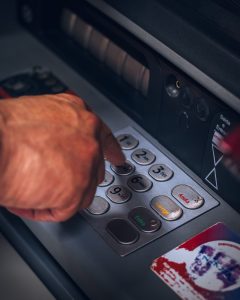Fibonacci retracement is a popular tool used by traders to identify potential levels of support or resistance in a market. It is based on the Fibonacci sequence, which is a series of numbers where each number is the sum of the two preceding numbers. The sequence goes 0, 1, 1, 2, 3, 5, 8, 13, 21, 34, and so on.
In the context of forex trading, Fibonacci retracement is used to identify potential levels of support or resistance based on the percentage levels derived from the Fibonacci sequence. The most commonly used levels are 38.2%, 50%, and 61.8%.
Drawing Fibonacci retracement levels properly in forex requires some basic knowledge of the tool and its application. Here are the steps to follow:
Step 1: Identify the High and Low Points of the Trend
The first step in drawing Fibonacci retracement levels is to identify the high and low points of the trend. A trend is a series of higher highs and higher lows in an uptrend, and lower highs and lower lows in a downtrend.
To draw Fibonacci retracement levels in an uptrend, start by identifying the high point of the trend and the low point of the trend. The high point is the highest price reached during the trend, and the low point is the lowest price reached during the trend.
To draw Fibonacci retracement levels in a downtrend, start by identifying the low point of the trend and the high point of the trend. The low point is the lowest price reached during the trend, and the high point is the highest price reached during the trend.
Step 2: Draw the Fibonacci Retracement Levels
Once the high and low points of the trend have been identified, the next step is to draw the Fibonacci retracement levels. This is done by drawing a horizontal line at the high point (in an uptrend) or the low point (in a downtrend), and another horizontal line at the low point (in an uptrend) or the high point (in a downtrend).
Next, draw a vertical line connecting the two horizontal lines. The vertical line represents the price range of the trend.
Finally, draw the Fibonacci retracement levels by dividing the vertical line into the Fibonacci ratios of 38.2%, 50%, and 61.8%. These levels represent potential levels of support or resistance in the trend.
Step 3: Interpret the Fibonacci Retracement Levels
Once the Fibonacci retracement levels have been drawn, the next step is to interpret them. The most common interpretation is that the 38.2% level represents a shallow retracement, the 50% level represents a moderate retracement, and the 61.8% level represents a deep retracement.
Traders will often look for price action signals at these levels, such as bullish or bearish candlestick patterns, to confirm whether the level is acting as support or resistance.
It is important to note that Fibonacci retracement levels are not always accurate, and should not be relied upon as the sole basis for trading decisions. Other technical indicators and fundamental analysis should also be considered before making a trading decision.
In conclusion, Fibonacci retracement is a powerful tool for identifying potential levels of support or resistance in forex trading. Drawing Fibonacci retracement levels properly requires identifying the high and low points of the trend, drawing the horizontal and vertical lines, and dividing the vertical line into the Fibonacci ratios of 38.2%, 50%, and 61.8%. Traders should use Fibonacci retracement levels in conjunction with other technical indicators and fundamental analysis to make informed trading decisions.





